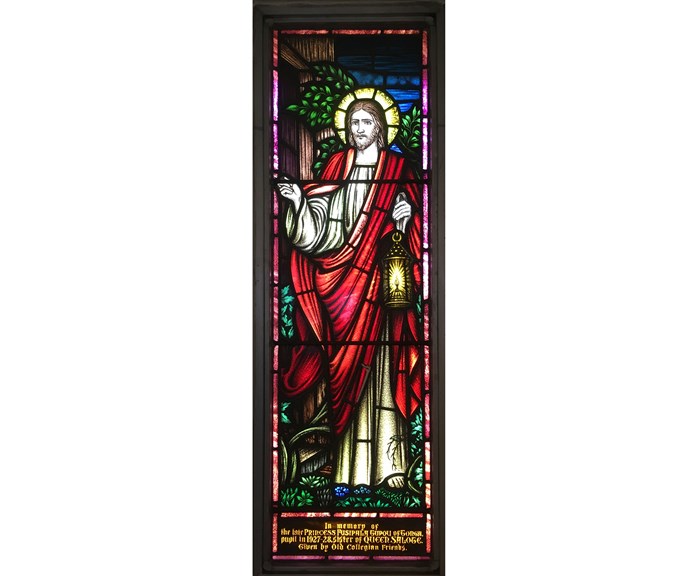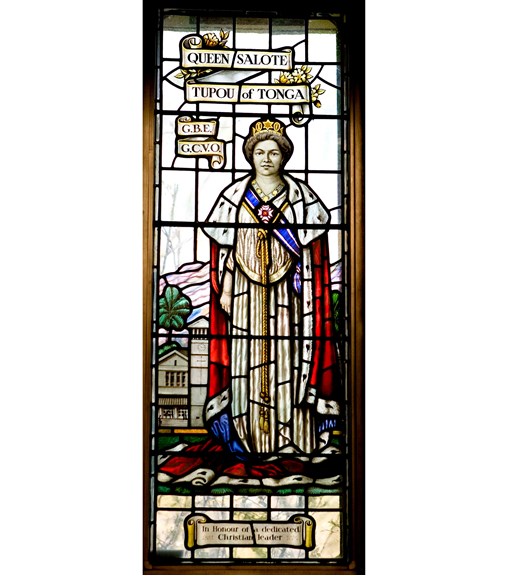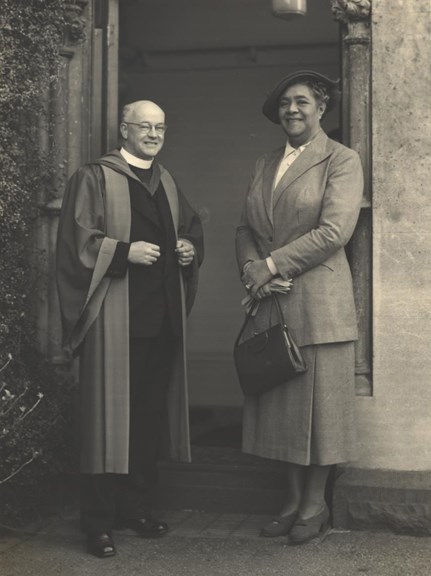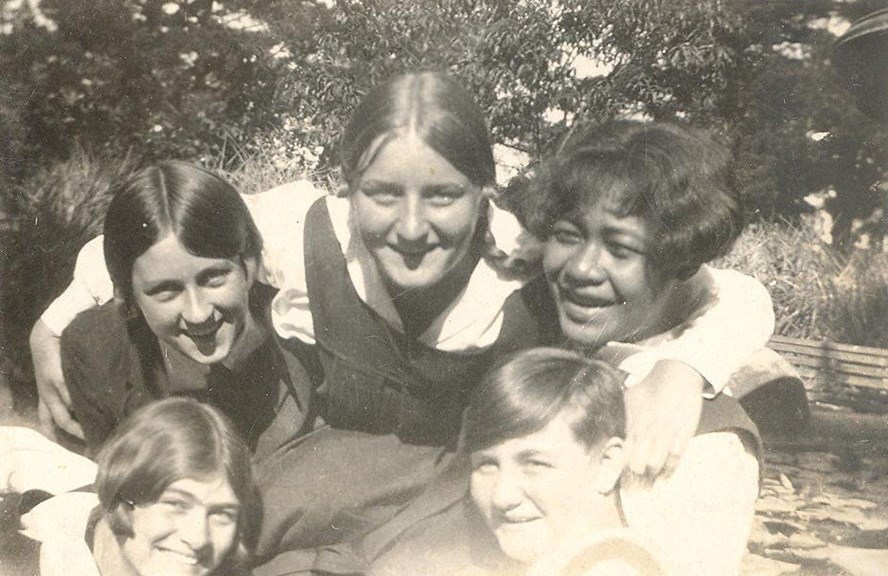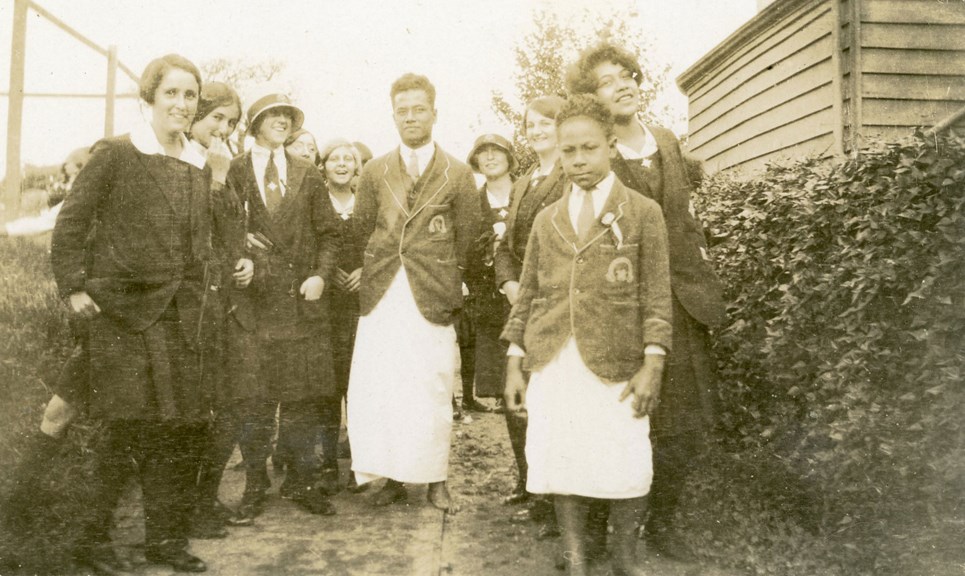Princess Fusipala in Melbourne
Princess Lātūfuipeka speaks about Princess Fusipala’s life in Melbourne.
Princess Lātūfuipeka: Queen Sālote and her Consort, Prince Tungi, thought it would be better to send Princess Fusipala to the Methodist Ladies’ College, Melbourne, Australia, in the hope that she would become a loyal member of the Methodist Church in Australia and a dedicated member of the Free Wesleyan Church of Tonga.
When Princess Fusipala turned 14 years old in 1926 she continued her studies in MLC. She was known at school as Fusi and her name that was recorded was Fusipala Tupou. She lived in the boarding house now called Tiddeman Boarding House and participated actively in school. The Princess left the College at the end of 1928 and she tragically died on a return visit to Australia in 1933. A special appeal was launched by her former classmates led by her dear friend Elsie Scholes to raise funds for a stained glass window in her honour at the Fitchett Chapel. The window is a representation of the painting The Light of the World by Holman Hunt, one of the founders of Pre-Raphaelite movement. It illustrates a quote from Christ, 'Behold, I stand at the door and knock; if any man hear my voice, and open the door, I will come to him, and will sup with him, and he with me.'
Queen Sālote was on her way to attend the coronation of Queen Elizabeth II in London and visited MLC in 1953 to lay the foundation of the College’s new Junior school. Queen Nanasipau’u also attended MLC in 1968 until 1969 before she continued her studies in London.
The reports that Queen Sālote received from Dr W H Fitchett, Principal of the Methodist Ladies College were hopeful. Fusipala was proving herself a good student with a quick mind and willingness to work. She won the respect and affection of both of her fellow students and her teachers. ‘Her general conduct is admirable, and she finds real enjoyment in the life of MLC. In music she really has a touch of genius. Fusipala was on the program for a piano solo by one of the great masters and she played it magnificently.’
A school friend, Elsie Scholes, confirmed that Fusipala was friendly and popular and developed her gifts for music, for she played not only the piano but also the organ, violin and ukulele and had a good singing voice. She was in demand to perform Tongan dances but otherwise lived the life of a papālangi | of European descent teenager of that time. When a Tupou College choir toured Australia in the early months of 1928, Fusipala joined in some of their Melbourne concerts by dancing the tau’olunga, playing the piano and singing ‘Drink to me only with thine eyes’ while the choir hummed the accompaniment. Crown Prince Taufa’ahau was a privileged member of the choir but Fusipala showed no aloofness with other members in spite of her royal rank, giving the Tupou College boys advice about papālangi ways, helping to prepare food for them and taking them to visit papālangi families.

